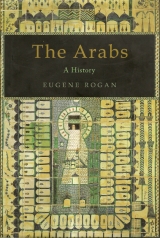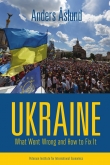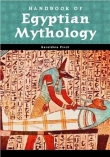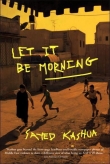
Текст книги "The Arabs: A History"
Автор книги: Eugene Rogan
Жанры:
Военная история
,сообщить о нарушении
Текущая страница: 40 (всего у книги 47 страниц)
Liberation came at a high price. The Kuwaitis expressed profound joy at the restoration of their independence, but their country had been utterly destroyed by the Iraqi invasion and the war. Hundreds of oil wells burned out of control, infrastructure had been shattered, and much of the country had to be rebuilt from scratch. The population of Kuwait was deeply traumatized by occupation and war, with thousands killed, displaced, or missing. The wider Arab world also came out of the conflict divided and traumatized. Arab citizens strongly opposed their governments’ decision to side with the coalition and fight against a fellow Arab state. Those governments that joined the coalition ostracized those who did not. Jordan, Yemen, and the PLO were condemned for having been too supportive of Saddam Hussein?s regime. All three were heavily reliant on financial support from the Gulf, and they suffered economically for the stance they had taken. Many Arab analysts expressed deep mistrust for the United States and concerns for American intentions in the new unipolar world. America?s single-minded pursuit of a military solution, and perceived obstruction of efforts to secure a diplomatic resolution to the Gulf crisis, led many to believe that the United States used the war to establish its military presence in the Gulf and to dominate the region?s oil resources. The fact that thousands of American troops remained in Saudi Arabia and the other Gulf states years after the liberation of Kuwait only deepened these concerns. Withdrawal from Kuwait brought no respite to Iraq. The Bush administration, believing it had destroyed Saddam Hussein’s prestige along with his military, encouraged the people of Iraq to rise up and overthrow their dictator in early February, 1991. American radio stations broadcast messages into Iraq promising U.S. support for popular uprisings. Their message fell on receptive ears in both the Kurdish districts of northern Iraq and the Shiite regions of the south that had suffered most from Saddam Hussein’s rule. Uprisings broke out in both regions in early March 1991. It was not the outcome the United States had hoped to achieve with its propaganda. The Americans wanted to see a military coup in Baghdad overthrow Saddam Hussein. The Kurdish and Shiite uprisings both threatened American interests. Turkey, which was an ally to the United States under the North Atlantic Treaty Organization (NATO), had been combating a bitter separatist insurgency led by the Kurdistan Workers’ Party (known by the Kurdish acronym, the PKK) since 1984 and opposed any measure that might give rise to an Iraqi Kurdish state on Turkey’s eastern frontier. The Americans for their part feared that a successful Shiite revolt would only strengthen the regional influence of the Islamic Republic of Iran. The Americans offered no support to either the Shiites or Kurds, despite having encouraged the Iraqis to rise up. Instead, the Bush administration turned a blind eye while Saddam Hussein reassembled the remnants of his forces to suppress the rebellions with ruthless brutality. Tens of thousands of Iraqi Shiites are believed to have been killed in the suppression of their revolt, and hundreds of thousands of Kurds fled Iraqi retaliation to take refuge in Turkey and Iran. Faced with a massive humanitarian catastrophe of its own making, the United States responded by imposing a no-fly zone over northern Iraq. U.S. and British aircraft patrolled the region north of the 36th Parallel to protect the Kurds from Saddam Hussein’s forces. Ironically, the no-fly zone created precisely the sort of autonomous Kurdish enclave that Turkey had most opposed. Elections to a regional assembly independent of Saddam Hussein?s state were held in May 1992, setting in motion the creation of what would become the Kurdish Regional Government in Iraq. Having failed to unseat Hussein by military means or domestic uprising, the Bush administration returned to the United Nations to secure a resolution stripping Iraq of its weapons of mass destruction, establishing Iraq’s responsibility to pay wartime reparations, and reinforcing economic sanctions imposed by earlier resolutions. Saddam Hussein recognized that these measures were designed to provoke his overthrow, and he responded with defiance. He commissioned a mosaic portrait of George H. W. Bush in the entrance of the Al-Rashid Hotel in Baghdad so that all its customers would tread on the face of his adversary. In November 1992, Hussein celebrated Bush’s defeat in the presidential elections. Bush had fallen; Saddam was still in power. The Americans could claim an outright military victory in the Gulf War, but only a partial political victory. The survival of Saddam Hussein meant Iraq remained a source of instability in a region of heightened volatility. And, much against the wishes of the Bush administration, Saddam set the agenda for regional politics after the Desert Storm Gulf War. By drawing parallels between Iraq’s position in Kuwait to the Syrian occupation of Lebanon, and the Israeli occupation of Palestinian territory, the Iraqi leader forced the international community to address some of the outstanding conflicts in the Middle East. 
By the end of the 1980s, the prospects for peace in Lebanon had never seemed more remote. Ninety percent of the country was under foreign occupation, with Israel in control of the so-called South Lebanon Security Zone, and Syrian troops everywhere else. Foreign funds flooded the country, arming a host of rival militias whose power struggles laid waste to towns and cities in all parts of Lebanon. A whole generation had grown up in the shadow of war, denied an education or the prospect of a earning an honest living. The once-prosperous model democracy of the Middle East had disintegrated into a failed state over which Syria exercised a tenuous control. The breakdown of the Lebanese state under the duress of communal fighting had put into question the very bases of Lebanon’s sectarian system of politics as set out in the 1943 National Pact. Many veteran politicians held Lebanon’s volatile mix of religion and politics responsible for the civil war and were determined to impose a root and branch reform as part of any peace settlement. Rashid Karami, a Sunni Muslim who served ten times as prime minister, had long called for a major reform of the Lebanese government to establish political equality between Muslims and Christians. Karami, who again held the premiership between 1984 and 1987, believed that all Lebanese citizens, regardless of their faith, should have an equal right to run for any office. Other reformist members of the cabinet shared Karami?s views. Nabih Berri, head of the Shiite Amal Party and minister of justice, dismissed the National Pact as ?a sterile system incapable of revision or improvement? and called for a new political system.28 Amin Gemayel, whose six-year term as president represented the nadir of Lebanese politics (1982–1988), became the focus of the reformers’ attacks. The Druze transport minister, Walid Jumblatt, suggested Gemayel should be driven from office at gunpoint. Many ministers refused to attend the cabinet sessions that he chaired. Karami joined the boycott, and the cabinet ceased to meet, bringing the government to a complete standstill. Karami escalated the confrontation with Gemayel in May 1987, when the premier tendered his resignation. Many observers believed Karami had resigned to make a bid for the presidency in the upcoming1988 elections. The Sunni politician had tried once before, in 1970, and had been barred from running for a post that was reserved for Maronite Christians. Karami was a respected public figure with powerful supporters in the reformist camp. Perhaps, given the breakdown in Lebanese politics, he might have stood a better chance in 1988 than he had in 1970. However, he never got the chance to declare his candidacy. Four weeks after resigning as prime minister, Rashid Karami was assassinated by a bomb planted in his helicopter. Though Karami’s assassins were never found, the message behind his killing was widely understood: the National Pact was not open for negotiation. The isolated President Gemayel could not find a credible Sunni politician who was willing to serve as prime minister following Karami’s assassination. He designated the Sunni minister of education in Karami’s defunct cabinet, Selim al-Hoss, as acting premier. From June 1987 until the end of Gemayel’s term on September 22, 1988, Lebanon went without a functioning government. The challenge facing Lebanon in 1988 was to agree on a new president when the warring political elites could not agree on anything. Only one candidate stood for the presidency in 1988: former president Suleiman Franjieh. The public had no confidence in the seventy-eight-year-old warlord who had proved ineffectual in preventing civil war in his previous term of office (1970–1976). No one believed he would be any more effective at achieving national reconciliation twelve years later. The lack of presidential candidates proved a moot point, for by election day there were not even enough electors present to select a new president. In Lebanon, the president is elected by the parliament, and as no parliamentary elections had been held since the outbreak of civil war, the aging survivors of the 1972 parliament were summoned on August 18 to fulfill their constitutional duty for the third time. Many of the seventy-six surviving deputies had fled their war-torn country for a safer life abroad, and on election day only thirty-eight managed to take their seats. The parliament inquorate, Lebanon went without a president for the first time in the country?s history. According to the Lebanese constitution, in the absence of an elected president, the prime minister and his cabinet are empowered to exercise executive authority until a new president is installed. As President Gemayel’s term came to an end, this constitutional provision posed grave dangers to the Maronite guardians of the political status quo. As Lebanon had never gone without a president, no Sunni had ever exercised executive authority. Conservative Maronites feared that if al-Hoss were to assume such power, inevitably he would seek to reform the political system and dispense with the National Pact in the interest of (Muslim) majority rule. And that would mean the end of Lebanon as a Christian state in the Middle East. As the end of Gemayel’s term approached, at midnight on September 22, the Maronite commander in chief of Lebanon’s army, General Michel Aoun, took matters in his own hands. A native of the mixed Christian-Shiite village of Haret Hreik in Beirut’s southern suburbs, the fifty-three-year-old general demanded that Gemayel dismiss the caretaker al-Hoss government before it achieved executive powers by default. “Mr. President,” General Aoun warned him, “it is your constitutional right either to form a new government or not. Should you choose to do the latter [i.e., not form a government], we will consider you a traitor from midnight.”29 In trying to prevent one crisis Aoun’s coup was creating another. As a Maronite Christian, he was ineligible for the premiership, which under the terms of the National Pact was reserved for Sunni Muslims. The man who claimed to be upholding the National Pact was actually undermining the foundations of Lebanon’s sectarian system. Yet at the eleventh hour—at a quarter to midnight, to be precise—Amin Gemayel succumbed to Aoun’s pressures and signed his last two executive orders. The first dismissed the caretaker cabinet of Selim al-Hoss, and the second appointed General Michel Aoun as head of an interim government. Al-Hoss and his supporters rejected Gemayel’s last-minute decrees and claimed the right to rule Lebanon. Overnight, Lebanon went from being a country with no government to a country with two governments, with mutually incompatible agendas: al-Hoss sought to replace Lebanon’s confessional system with an open democracy that would favor the country’s Muslim majority, under Syrian trusteeship; Aoun hoped to reestablish the Lebanese state on the basis of the National Pact, preserving its Christian dominance, with total independence from Syria. The rival governments split Lebanon into Christian and Muslim statelets. Few Christians were willing to serve in the al-Hoss cabinet, and no Muslims would participate in the Aoun government. Al-Hoss ruled over the Sunni and Shiite heartlands, and Aoun over the Christian districts of Lebanon. There was an element of farce in the rivalry, as both leaders appointed their own heads of the military, security apparatus, and civil service. Only the Lebanese Central Bank withstood the pressures of duplication, though it found itself financing the expenditures of both governments. The real danger came from outside patrons. Al-Hoss’s cabinet was openly supportive of Syria’s role in Lebanon and enjoyed the full backing of Damascus. Aoun condemned the Syrian presence in Lebanon as a threat to the sovereignty and independence of the country, and he gained Iraq’s full support. Baghdad was intent on settling scores with Damascus for having broken Arab ranks to side with Iran in the 1980–1988 Iran-Iraq War. Lebanon’s many feuds provided the Iraqi government with ample opportunity to punish Syria. With massive stores of weapons and ammunition, the Iraqi government was able to provide military assistance to Aoun in his opposition to Syria’s presence in Lebanon, especially after the Iran-Iraq War came to an end in August 1988. So emboldened, Aoun declared a war of liberation against Syria on March 14, 1989. Syria’s army responded by imposing a total blockade over the Christian regions under Aoun’s rule. The two sides began to exchange lethal volleys of heavy artillery, causing massive destruction to Muslim and Christian districts of Lebanon and displacing tens of thousands of civilians in what proved the heaviest bombardment since the 1982 Israeli siege of Beirut. Two months of horrific fighting and heavy civilian casualties galvanized the Arab states into action. In May 1989, an Arab summit was convened in Casablanca, Morocco, to address the new crisis in Lebanon. The conference gave a mandate to three Arab heads of state, King Fahd of Saudi Arabia, King Hassan II of Morocco, and President Chadli Benjedid of Algeria, to negotiate an end to the violence and set in process the restoration of stable government in Lebanon. The three rulers, dubbed “the troika,” ordered Syria to respect a cease-fire and demanded that Iraq stop arms shipments to Aoun and the Lebanese Forces militia. The troika’s efforts met with little success at first. The Syrians ignored the troika’s demands and stepped up their bombardment of the Christian enclave, and Iraq continued to supply its allies through ports under the control of Syria’s Maronite opponents. After six months of fighting, the troika finally persuaded all sides to observe a cease-fire in September 1989. The Arab leaders invited Lebanon’s parliamentarians to a meeting in the Saudi city of Taif to initiate a process of national reconciliation on neutral ground. The Lebanese deputies, all survivors of the election of 1972, ventured from their places of exile in France, Switzerland, and Iraq, or from their safe houses in Lebanon, to assemble in Taif to decide the future of their country. Sixty-two deputies attended the meeting—half of them Christians, the rest Muslims—providing the necessary quorum to make decisions on behalf of the Lebanese state. The Saudi foreign minister, Prince Saud al-Faisal, convened the opening meeting on October 1, 1989, warning that ?failure was forbidden.? Success took longer than expected. What had been planned as a three-day conference turned into a twenty-three-day marathon that produced nothing less than the blueprint for Lebanon’s Second Republic. The terms of Lebanon’s political reconstruction, enshrined in the Taif Accord, preserved many of the elements of the confessional system set out in the National Pact but modified the structure to reflect the demographic realities of modern Lebanon. Thus, seats in parliament were still distributed among the different religious communities, but the distribution had been changed from a 6:5 ratio that favored the Christian communities to an equal division of seats between Muslims and Christians. The number of seats in parliament was increased from 99 to 108 so that the expansion of Muslim representatives could be achieved without any decrease in Christian seats. The reformers failed in their primary objective of opening political office to all citizens without distinction by religion. It soon became apparent that such an assault on the confessional order would not gain consensus. The compromise solution was to preserve the distribution of offices as set out in the National Pact but to redistribute the powers of those offices. The president would remain a Maronite Christian, but the office was reduced to the more ceremonial role of “head of state and symbol of unity.” The prime minister and the cabinet, known as the Council of Ministers, were the main beneficiaries of the redistribution of power. Executive authority would now lie with the Sunni premier, who would chair the cabinet meetings and was charged with implementation of policy. Moreover, although the president still named the prime minister, only the parliament had the power to dismiss the premier. The speaker of the parliament, the highest post allowed for a Shiite Muslim, was also given important new powers by the Taif reforms, including a “kingmaker” role in advising the president on the appointment of the prime minister. With these changes, the Maronites could claim to have preserved their key offices, while Muslims could claim to hold more powers than the Christians. As a reform measure, the Taif Accord provided a compromise that all parties could accept, even if it left all dissatisfied. Aoun’s supporters failed in their bid to force Syria from Lebanon through the Taif Accords. The troika found Hafiz al-Asad unwilling to compromise on Syria’s position in Lebanon, and recognized that an accord would be meaningless without Syria’s support. The Taif Accord gave formal thanks to the Syrian army for past services rendered, legal recognition to Syrian troops currently stationed in Lebanon, and left it to the Lebanese and Syrian governments to agree among themselves when to terminate the Syrian military presence in Lebanon at some unspecified point in the future. The Taif Accord also called on the governments of Lebanon and Syria to formalize their ?privileged relationships in all fields? through bilateral treaties. In short, the accord gave legal sanction to Syria?s position in Lebanon and bound the two countries closer together. The Lebanese politicians assembled in Saudi Arabia recognized the realities of their position and accepted a compromise solution in the hope of achieving better in the future. The final draft of the accord was approved by the Lebanese deputies in Taif without opposition. The announcement of the Taif Accord set off the final round of fighting in war-torn Lebanon. From his battered enclave in the Christian highlands, General Aoun persisted in his claim to be the sole legitimate government of Lebanon. He rejected the accord outright for the legal cover it gave to Syria’s presence in Lebanon. He issued a presidential decree dissolving the Lebanese parliament in a bid to prevent the implementation of the Taif Accord, but to no avail. Aoun was now isolated at home and abroad as both the Lebanese and the international community put their support behind the framework for national reconciliation in Lebanon. In a bid to forestall Aoun’s challenge, the deputies hastened back to Beirut to ratify the Taif Accord. On November 5 the Lebanese parliament formally approved the accord and proceeded to elect the sixty-four-year-old deputy from Zghorta, Renй Moawad, as president of the republic. Scion of a respected Maronite family from the north, Moawad was a consensus candidate who enjoyed the support of both Lebanese nationalists and the Syrians. Yet Moawad had dangerous enemies. On his seventeenth day in office, the new president of Lebanon was assassinated by a powerful roadside bomb detonated as he returned home from Lebanese Independence Day celebrations. Syria, Iraq, Israel, and Michel Aoun were all accused of the murder, but those responsible for Moawad’s assassination have never been brought to justice. Moawad’s brutal murder risked provoking the collapse of the Taif process—as his assassins no doubt intended. The Lebanese parliament reconvened within forty-eight hours to elect a replacement before Moawad’s death could set back the reconstruction process agreed to in Taif. The Syrian authorities were even quicker than the Lebanese parliamentarians in finding a replacement for Moawad. Radio Damascus announced Elias Hrawi as the new president before the Lebanese deputies had put his nomination to the vote.30 By this deliberate gaffe, the Asad regime made clear to all that ultimate authority over Lebanon in the Taif era remained with Syria. One of President Hrawi’s first acts would be to take on Michel Aoun, now widely recognized as a renegade and an impediment to Lebanon’s political reconciliation. The day after his election, Hrawi dismissed Aoun as commander of the army and ordered him to withdraw from the presidential palace in Baabda within forty-eight hours. Ignoring Hrawi’s command, Aoun turned to his Iraqi patrons for resupply, securing arms, ammunition, and antiaircraft defenses through his own port near Beirut to reinforce his position against outside attack. The human shield surrounding Aoun?thousands of his civilian supporters camped out around the presidential palace in Baabda in a festival atmosphere?proved the greatest deterrent to Hrawi in facing down Aoun?s defiance. The Lebanese president did not have to take any action. Rivalries between Aoun and the Maronite Lebanese Forces militia turned into open conflict when the Lebanese Forces commander Samir Geagea declared his support for the Taif Accord in December 1989. Geagea, like Aoun, was supplied by the Iraqis. In January 1990, the rival factions went to war in fighting more intense than at any time since the outbreak of the civil war. Iraqi rockets, tanks, and heavy artillery were deployed with utter disregard for the safety of noncombatants in heavily populated neighborhoods, inflicting heavy civilian casualties. The fighting continued for five months before a tenuous cease-fire between the rival Christian factions was mediated by the Vatican, in May 1990. Though he faced isolation and growing opposition, Michel Aoun took some satisfaction in knowing that his battle with the Lebanese Forces had, for the moment at least, derailed the Taif Accord.
The Iraqi invasion of Kuwait in August 1990 proved the watershed in the Lebanese conflict. At war once again, Iraq could no longer afford to arm its Lebanese clients. Moreover, Saddam Hussein’s attempt to link Iraq’s withdrawal from Kuwait to a general resolution of regional problems, including the Syrian “occupation” of Lebanon, was a transparent bid to divert international pressure onto Syria to withdraw from Lebanon. The Syrians were far too adept at regional politics to succumb to Saddam Hussein’s ploy. Hafiz al-Asad was using the Kuwait crisis to improve Syrian relations with Washington, and Washington fully supported the Taif Accord. Al-Asad thus decided to give his government’s full support to implementing the Taif framework and cast Iraq’s ally Michel Aoun as the main obstacle to peace. The Lebanese and Syrians conferred, and on October 11 President Hrawi formally requested Syrian military assistance, under the terms of the Taif Accord, to oust General Aoun. Two days later, Syrian aircraft began the bombardment of Aoun’s positions while Syrian and Lebanese Army tanks advanced into territory held by Aoun’s forces. Within three hours, General Aoun had capitulated and sought asylum in the French Embassy while his partisans continued the struggle. The fighting—often very intense—was over within eight hours. When the smoke cleared over the empty presidential palace in Baabda on October 13, the people of Lebanon enjoyed their first glimpse of a postwar world, if still under Syrian occupation. It was only after the defeat of Michel Aoun that the postwar reconstruction envisaged by the Taif Accord could begin in earnest. In November 1990 the government ordered all militias out of the capital, Beirut, and in December the army cleared the barricades separating Muslim West Beirut from Christian East Beirut, reuniting the city for the first time since 1984. On Christmas Eve 1990, Omar Karami, brother of the assassinated reformist premier Rashid Karami, announced a new government of national unity. With thirty ministers, the cabinet was the largest in Lebanon’s history, and it integrated the leaders of nearly all the country’s main militias. The advantages of forming a government from the very warlords responsible for the worst atrocities of the conflict soon became apparent when the government decreed the disarmament of the militias—again, in accordance with the Taif Accord. The militias were given to the end of April 1991 to disband and surrender their weapons; in return, the government promised to integrate those militiamen who wished to serve in Lebanon’s army. However much the militia leaders might have objected, they did not oppose the government or resign from the cabinet.31 Only one militia was allowed to continue military operations: Hizbullah, which enjoyed Iranian and Syrian support, retained its weapons so that it could continue its resistance to the Israeli occupation in the south of Lebanon. The Shiite militia agreed to confine its operations to the territory Israel claimed as part of its South Lebanon “security zone,” which at any rate lay beyond the writ of the Lebanese government. Hizbullah would continue its jihad against the Israeli occupier, with growing sophistication and lethal effect. The fighting finally at an end, Lebanon faced the nearly insurmountable task of reconstruction after fifteen years of civil war. Between 1975 and 1990 an estimated 100,000–200,000 people died, many more were wounded and disabled, and hundreds of thousands were driven to exile. No city had been spared, as whole quarters were reduced to silent streets of shattered buildings. Squatters—refugees from later battles—had taken over habitable buildings abandoned in earlier battles. Utilities had completely broken down in many parts of the country. Private generators provided electricity, running water was sporadic and unhealthy, and raw sewage flowed through the streets, encouraging luxuriant plant growth among the ruins of the war. The social fabric of Lebanon was no less damaged. Memories of atrocities and of injustices that would never be redressed divided Lebanon’s many communities long after peace had been declared. A combination of reconciliation, amnesia, and a fierce drive to get on with life enabled the Lebanese to act like a nation again. Some have argued that the Lebanese have emerged stronger in their commitment to their nation as a consequence.32 Yet Lebanon remains a volatile country in which the threat of renewed conflict is never far from consciousness. 
Saddam Hussein’s invasion, and the American-led war to liberate Kuwait, had the unintended consequence of forcing America to address the long-simmering Israeli-Palestinian conflict. The American government recognized that the Kuwait crisis had placed its Arab allies under tremendous pressure. However cynical, Saddam Hussein’s frequent references to liberating Palestine had earned him widespread popular support across the Arab world and exposed other Arab governments to public condemnation. Arab citizens believed their governments had lost the plot: they should be fighting Israel to liberate Palestine, not fighting Iraq on America’s behalf to liberate Kuwaiti wealth and oil. America too came under widespread condemnation in the Arab press and public opinion. For years the Americans had supported Israel while it flaunted U.N. resolutions calling for the restoration of occupied Arab lands. In 1990, Israel remained in occupation of the Gaza Strip, the West Bank, the Golan Heights, and parts of southern Lebanon. Yet when Iraq invaded Kuwait, America invoked UN Security Council resolutions as though they were sacrosanct. Occupation was either right or wrong, and UN resolutions either were binding or they weren’t. The double standard in treatment of Iraq and Israel as occupiers was self-evident. President George H. W. Bush rejected Saddam Hussein’s attempts to link an Iraqi withdrawal from Kuwait to an Israeli withdrawal from the occupied Palestinian territories. But he could not escape the logic of the Iraqi demand. No sooner had the Iraq conflict ended than the Bush administration announced a new Arab-Israeli peace initiative, in March 1991. It was a transparent bid to regain the initiative and demonstrate that, in the New World Order, America could use its power as effectively in peace as in war. Palestinians greeted the news of the American initiative to restart the peace process with some relief. Their support for Saddam Hussein and his occupation of Kuwait had cost the Palestinians dearly. The international community shunned the PLO, and the Arab Gulf states cut all funding to the Palestinians. Though the Bush administration made clear they had no intention of rewarding the PLO for its stance in the recent conflict, the new peace initiative could only serve to break the Palestinians out of their isolation. Palestinian activist Sari Nusseibeh celebrated the Bush initiative in his cell in Ramle Prison. Nusseibeh was coming to the end of his three-month sentence, ostensibly for guiding Iraqi Scuds against Israeli targets, when Bush made his announcement in March 1991. The American initiative came as a total surprise to Nusseibeh. “Out of the blue George Bush, Sr., made a stunning policy statement: ‘A comprehensive peace must be grounded in resolution 242 and 338 and the principle of territory for peace.’” Bush went on to link Israeli security to Palestinian rights. And his secretary of state, James Baker, declared Israeli settlements in the West Bank the greatest obstacle to peace. ?I was dancing in my tiny cage after hearing this,? Nusseibeh recalled in his memoirs.33 Some Palestinians were more skeptical of American intentions. Hanan Ashrawi, one of Nusseibeh’s colleagues at Bir Zeit University and a leading Palestinian political activist, dissected the language of Bush’s statement. “The claim was that [Bush] would ‘invest the credibility that the United States had gained in the war in order to bring peace to the region.’ We read that as claiming the spoils of war.” Ashrawi saw the whole peace initiative as an American effort to subordinate the Middle East to its rules. “The claim was that a ‘New World Order’ was emerging with the end of the Cold War and that we were part of it. We read that as a reorganization of our world according to the American blueprint. The claim was that a window of opportunity was opening up for a Middle East reconciliation. We read that as a peephole, a long tunnel, or a trap.”34 The first thing the Americans made clear to the Palestinians was that they would not allow the PLO to play any role in the negotiations. The Israeli government categorically refused to attend any meeting with the PLO, and the Americans were intent on sidelining Yasser Arafat in retribution for his support of Saddam Hussein. U.S. secretary of state James Baker went to Jerusalem in March 1991 to invite Palestinian leaders from the West Bank and Gaza Strip to take part in a peace conference and negotiate on behalf of the Palestinians in the Occupied Territories. The Palestinians saw the Baker initiative as a blatant attempt to create an alternate Palestinian leadership. They wanted no part in undermining the PLO’s internationally recognized position as the sole legitimate representative of the Palestinian people. The “insider” political activists wrote to Tunis for official approval from Arafat before agreeing to meet with Baker on March 13. Eleven Palestinians attended the first meeting, chaired by the Jerusalemite Faisal al-Husseini. The son of Abd al-Qadir al-Husayni, whose death in the 1948 battle of al-Qastal marked the defeat of Palestinian resistance to Zionism, Faisal al-Husseini was the scion of one of Jerusalem’s oldest and most respected families. He was also a loyal Fatah member with close ties to Yasser Arafat. “We are here at the behest of the PLO, our sole legitimate leadership,” al-Husseini began. “Whom you choose as your leadership is your own business,” Baker responded. “I am looking for Palestinians from the Occupied Territories who are not PLO members and who are willing to enter into direct bilateral two-phased negotiations on the basis of UNSC resolutions 242 and 338 and the principle of land for peace, and who are willing to live in peace with Israel. Are there any in this room?” Baker looked the eleven Palestinians in the face, but they were not to be rushed. “We must remind you, Mr. Secretary, that we are a people with dignity and pride. We are not defeated, and this is not Safwan Tent,” said Saeb Erakat, referring to the tent set up by the Americans to negotiate the terms of Iraq?s surrender at the end of the Gulf War. The burly Erakat was an English-trained professor of political science at al-Najah University in Nablus. “It’s not my fault you backed the losing side,” Baker retorted. “You should tell your leadership not to back the wrong horse; that was absolutely stupid. There’s a big price to be paid.” “I’ve agreed to come to this meeting to talk about one thing only,” said Haidar Abdel Shafi. A physician and president of the Gaza Medical Association, Abdel Shafi was the senior statesman in the Occupied Territories and had served as speaker of the Palestinian parliament while Gaza was under Egyptian rule, from 1948 to 1967. “Israeli settlement activities in the Occupied Territories must stop. There will be no peace process while the settlements continue. You can count on hearing this from me all the time.” “Begin negotiations, and the settlements will stop,” Baker responded. “They must stop before, or we can’t enter the process,” the Palestinian activists replied in chorus. Secretary Baker recognized that the conversation was turning to negotiation, and that he had found a credible group to represent Palestine at the peace conference. “Now you’re talking business,” he said with some satisfaction.35








